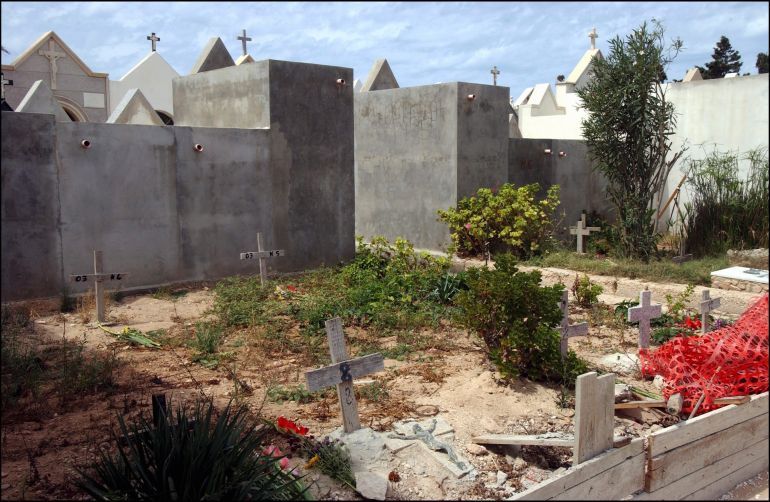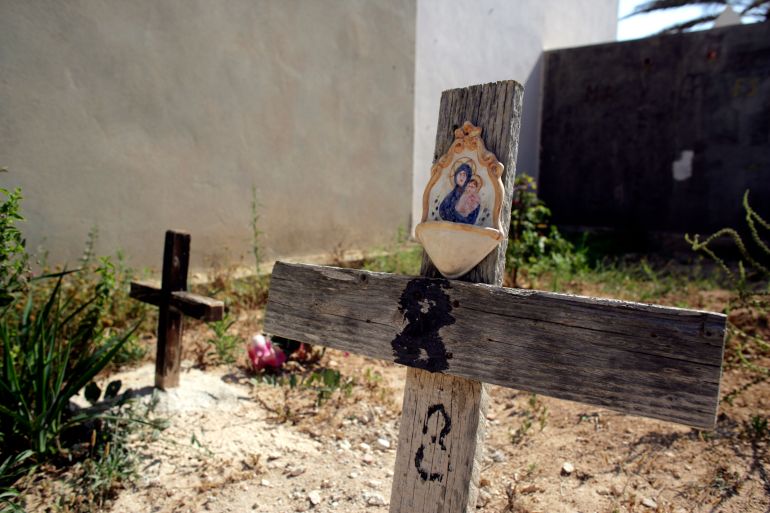A familiar face has returned to Westminster as foreign secretary. It’s not every day that a former prime minister is inserted into high office through the House of Lords. But this is Britain, the land of gentlemen’s agreements.
David Cameron has even taken the title of Baron of Chipping Norton, the market town where the Cameron family has a cottage. The media once joked about the ‘Chipping Norton set’ inclusive of the Camerons and their neighbors, such as Murdoch executive Rebekah Brooks.
Of course, Cameron still has his fans despite the Greensill lobbying scandal. We’re told he brings “gravitas” and “experience” to the role. Gravitas like austerity and experience like bombing Libya into rubble.
This appointment is a sign that the Conservative government is in trouble. Rishi Sunak needed to bring on board a big name. He needed to distract from the fiasco of sacking his Home Secretary Suella Braverman over her inciting an outbreak of far-right protests.
It’s been a success at that level. “Daddy’s home,” tweeted Tory journalist Iain Dale when he heard the news. Forget the essay crisis style of leadership. Forget over 100,000 excess deaths thanks to austerity.
Worse still, Lord Cameron will not face awkward questions from MPs because a peer cannot address the House of Commons. British foreign policy has effectively been moved out of parliamentary scrutiny.
Still, such a farce is not unprecedented. The last member of the House of Lords to serve in one of the great offices of the British state was Lord Carrington, who served as foreign secretary in the first Thatcher government.
What Cameron really brings to the role is reassurance that the status quo is secure. He is a safe pair of hands for certain sections of the political and media establishment. But we can better understand Cameron’s foreign policy via a series of snapshots.
Exhibit A: Brexit
First, we have the obvious fact that David Cameron helped make Brexit happen by holding the referendum in the first place. He did so for purely cynical reasons to try and end the old battle in his own party.
After the 2014 Scottish independence referendum, the Cameron government was complacent that it could win over the public with similar campaign tactics. Project Fear was rebooted for the Brexit referendum and all criticism of UK policy was surrendered.
Because the Remain campaign was effectively run by Team Cameron the pro-EU debates lacked any serious criticism of austerity. Most of the Conservative base voted Leave in the end, joined by UKIP and a sizeable minority of Labour voters.
Some people have even claimed he is the worst prime minister in British history. That’s a tough call, especially since he was followed by such luminaries as Theresa May, Boris Johnson and Liz Truss. At least Sunak shares his slick, yet empty PR managerialism.
It’s a sad fact that Cameron now looks like a figure of stability after his successors came bouncing onto the stage. Cameron will go down in history for Brexit, though he should be remembered for much worse things.
Exhibit B: China
UK China policy was more pragmatic under Cameron. Back in 2010, Hu Jintao was still general secretary of the Chinese Communist Party and Xi Jinping succeeded him just two years later. But it wouldn’t be for several years before Xi removed most limits on his power.
Even though the Obama administration was seeking to pivot US militarism to East Asia, the UK government was still in the ‘end of history’ phase with regard to China policy. Chancellor George Osborne talked up close economic ties to China as de facto support for democracy.
This theory was widely popular in Western liberal circles: China would inevitably move towards multiparty democracy as part of its embrace of capitalism. This was a convenient fantasy when Cameron and Xi were signing off on £30 billion in trade and investment deals.
Now the British right has assumed the same hostility to China as their US counterparts. The China Research Group was founded by Tory MPs in 2020 to forge a more belligerent response to the rise of China (as if they’ve only just noticed).
As a result, the Tory hard right is suspicious of Cameron because of his record in office and after office. He worked for a private Chinese investment fund after leaving Downing Street. Worst still, the fund in question worked on the Belt and Road Initiative.
Exhibit C: Israel and Palestine
Now we come to the biggest foreign policy question today: Israel’s war on the Palestinians. Cameron has been described as the most pro-Israel prime minister the UK has ever had. This requires some unpacking. He came to power just after the horrors of Operation Cast Lead.
Strangely, Cameron was the first British prime minister to refer to Gaza as a prison camp. He did so in a speech in Turkey after the IDF attacked the Gaza Freedom Flotilla in 2010. Cameron called for the end of the blockade of Gaza and criticized the expansion of Israeli settlements.
Two years later, Cameron opposed the recognition of Palestine as a state at the UN. This is despite his claims to support the two-state solution (a prospect blocked by Israeli policy). But the lowest point came in 2014 with Operation Protective Edge.
During the 50-day war, the Cameron government was hesitant to take a strong position against Israeli aggression. Senior Foreign Office minister Sayeeda Warsi resigned from Cameron’s cabinet in protest calling for an arms embargo against Israel.
The Tory Arabism of yesteryear lives on in the form of close relations with the Gulf dictatorships. Cameron walked the line of arming Saudi Arabia and letting Qatar buy up British assets, while supporting Israel’s occupation to the hilt.
This is still the definitive contradiction of UK Middle East policy today. The UK has a £10 billion investment deal with Qatar, as well as a military cooperation agreement (signed by Cameron’s government).
Meanwhile, Qatar has pursued its own agenda. The Gulf kingdom has supported the Muslim Brotherhood, including its Palestinian affiliate Hamas. This feedback loop is rarely touched upon in British media.
Exhibit D: Iran
One of the very few cases where David Cameron helped improve global stability was Iran policy. To his credit, Cameron supported the Iran nuclear deal to lift sanctions in exchange for access to the nuclear facilities and guarantees that the program was for energy purposes.
Cameron met with President Hassan Rouhani in 2013. The reformist Iranian government was open to negotiation and engagement with Western powers. It was an opportunity to reset the West’s relationship with Iran after decades of hostility.
Of course, the UK was not alone in this process. The Iran nuclear deal was supported by the Obama administration, as well as by China, the EU and Russia. It was a great achievement of diplomacy.
The end of sanctions over Iran’s nuclear program allowed a space for dissent in a country blighted by a cruel dictatorship. It was possible to imagine a democratic opening for Iranian dissidents. However, it wasn’t to be thanks to the Trump administration.
All of these hopes were swept away in 2018. Donald Trump tore up US commitments to the nuclear deal and reverted to a tough line on the Islamic Republic. And Iran has since returned to hardline leadership embodied by President Ebrahim Raisi.
Exhibit E: Libya
Arguably, Cameron’s most egregious foreign policy decision was to join the NATO intervention in the Libyan civil war. The Arab Spring had destabilised the balance of forces in the Middle East, taking down dictators in Egypt and Tunisia.
On the back of the UN mandate for a no-fly zone, the UK launched Operation Ellamy as part of its support for the NATO campaign. Of course, the Benghazi rebels had pledged to respect old oil arrangements to win over European support.
Not only did the NATO campaign help destroy the Gaddafi regime, the Western powers did nothing to support a post-war reconstruction effort to create democratic institutions and a functioning civil society. This was neoliberal foreign policy par excellence.
Today, Libya is still a failed state more than a dozen years later. A playground for jihadis, human traffickers and warlords with foreign backers. The hopes of the Arab Spring in Libya have been extinguished by the forces of counter-revolution.
Exhibit F: Syria
Much like the NATO bombing of Libya, Cameron saw another chance for glorious victory in Syria. He was naturally eager to keep on side with the Obama administration and maybe repeat the photo op in Benghazi, but this time maybe in Aleppo.
Not long after the regime change in Libya, the Syrian uprising was turning into an armed conflict with the Assad regime fighting to crush the rebellion. Thousands of foreign fighters were soon rushing into the country to oppose Assad.
A lot of people have forgotten Cameron’s claim that there were ‘70,000 moderate rebels’ in Syria ready to seize power. These rebels just needed an air force to back them up. The truth of the situation was quite different.
Contrary to popular memory, the 2013 vote in Parliament was not about a no-fly zone. It was a vote on punitive bombing. A no-fly zone was never on the table and 2013 would have just been a bombing campaign (as we saw in the years that followed) with no strategy or end goal.
The 2013 vote was ‘lost’ because the government’s motion was rejected, but so was the opposition’s motion. Amazingly, Cameron’s hawkish line on Syria and Labour’s tepid opposition to it canceled each other out. It was a fluke occurrence.
The following year Islamic State seized huge amounts of territory across Iraq and Syria. Suddenly, the calls for ‘humanitarian intervention’ shifted to demands to ‘do something’ about the Islamist threat. Naturally, Cameron expanded the use of drone strikes.
The UK followed the US and France into a bombing campaign against ISIS, which also targeted other Syrian rebel positions in coordination with Russia. This was while NATO member Turkey was quietly enabling ISIS to counter the Kurds.
Exhibit G: Yemen
While the West was bombing Syria, another brutal civil war was just getting started in Yemen. The Cameron government would end up on the side of military intervention, albeit not direct, to destroy the Houthi movement.
Fearing the spread of Iranian influence, Saudi Arabia began bombing Yemen in support of the Hadi regime. The US and the UK supported the Saudi operation to keep status quo forces in power in Yemen.
In this case, British policy was moved by its longstanding relationship with the Saudi regime. So the British government has continued to sell vast quantities of military hardware to Saudi Arabia, even as the Yemen civil war resulted in a humanitarian catastrophe.
Any pretense of humanitarian intervention disappeared in the case of Yemen. The forces of regime change were opposed in favor of a blood-soaked tyranny backed by another blood-soaked tyranny.




 Via Roma, the main street on the small island of Lampedusa, south of Sicily, on September 25, 2023 [Tiziana Fabi/AFP]
Via Roma, the main street on the small island of Lampedusa, south of Sicily, on September 25, 2023 [Tiziana Fabi/AFP]


